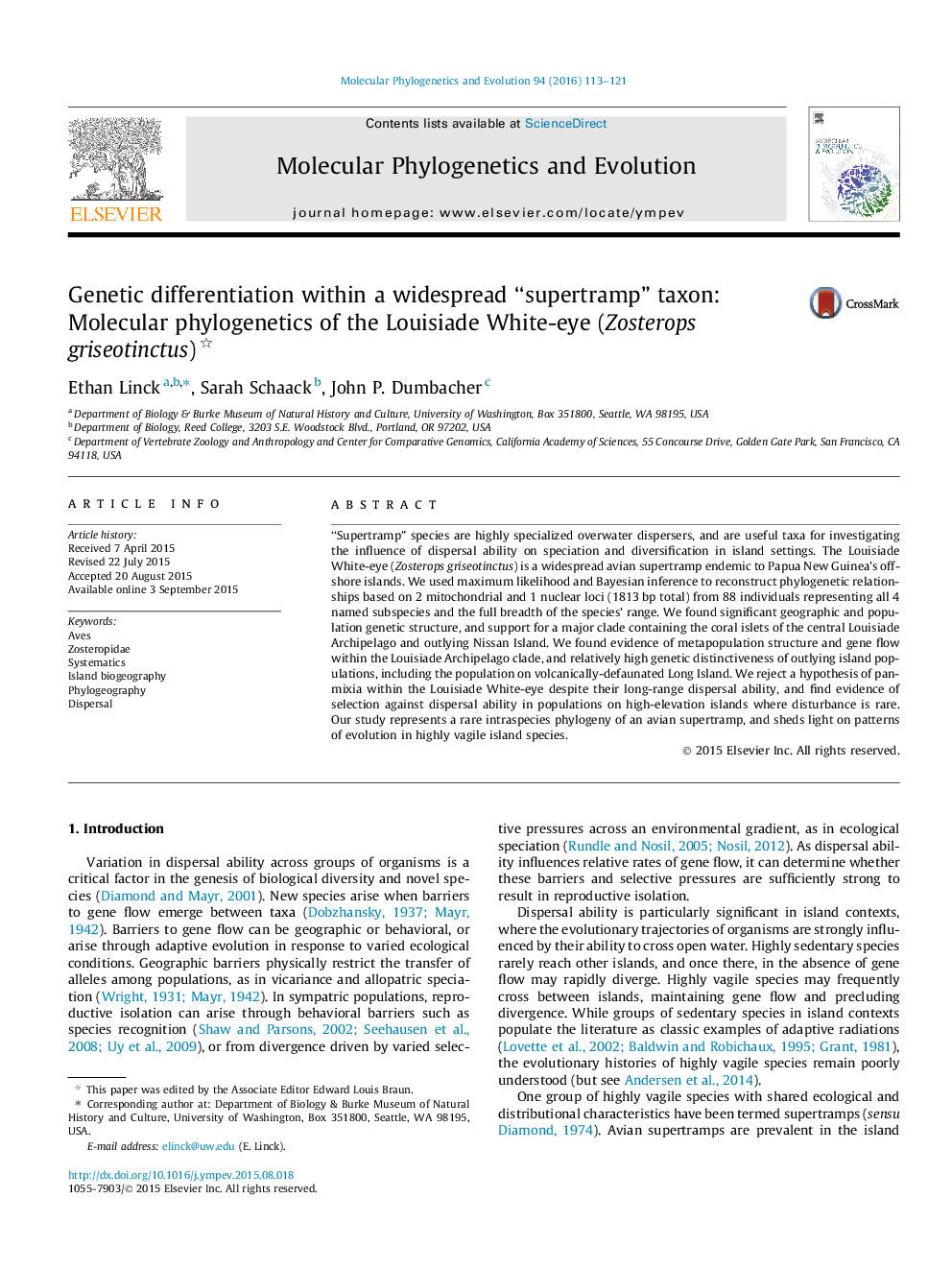| Article ID | Journal | Published Year | Pages | File Type |
|---|---|---|---|---|
| 5918718 | Molecular Phylogenetics and Evolution | 2016 | 9 Pages |
â¢Comprehensive sampling with 88 individuals spanning the species' range.â¢Significant phylogeographic structure in a highly vagile “supertramp” species.â¢Identified genetic distinctiveness of outlying island populations.â¢Evidence of selection against dispersal ability on larger islands.
“Supertramp” species are highly specialized overwater dispersers, and are useful taxa for investigating the influence of dispersal ability on speciation and diversification in island settings. The Louisiade White-eye (Zosterops griseotinctus) is a widespread avian supertramp endemic to Papua New Guinea's offshore islands. We used maximum likelihood and Bayesian inference to reconstruct phylogenetic relationships based on 2 mitochondrial and 1 nuclear loci (1813Â bp total) from 88 individuals representing all 4 named subspecies and the full breadth of the species' range. We found significant geographic and population genetic structure, and support for a major clade containing the coral islets of the central Louisiade Archipelago and outlying Nissan Island. We found evidence of metapopulation structure and gene flow within the Louisiade Archipelago clade, and relatively high genetic distinctiveness of outlying island populations, including the population on volcanically-defaunated Long Island. We reject a hypothesis of panmixia within the Louisiade White-eye despite their long-range dispersal ability, and find evidence of selection against dispersal ability in populations on high-elevation islands where disturbance is rare. Our study represents a rare intraspecies phylogeny of an avian supertramp, and sheds light on patterns of evolution in highly vagile island species.
Graphical abstractDownload high-res image (116KB)Download full-size image
